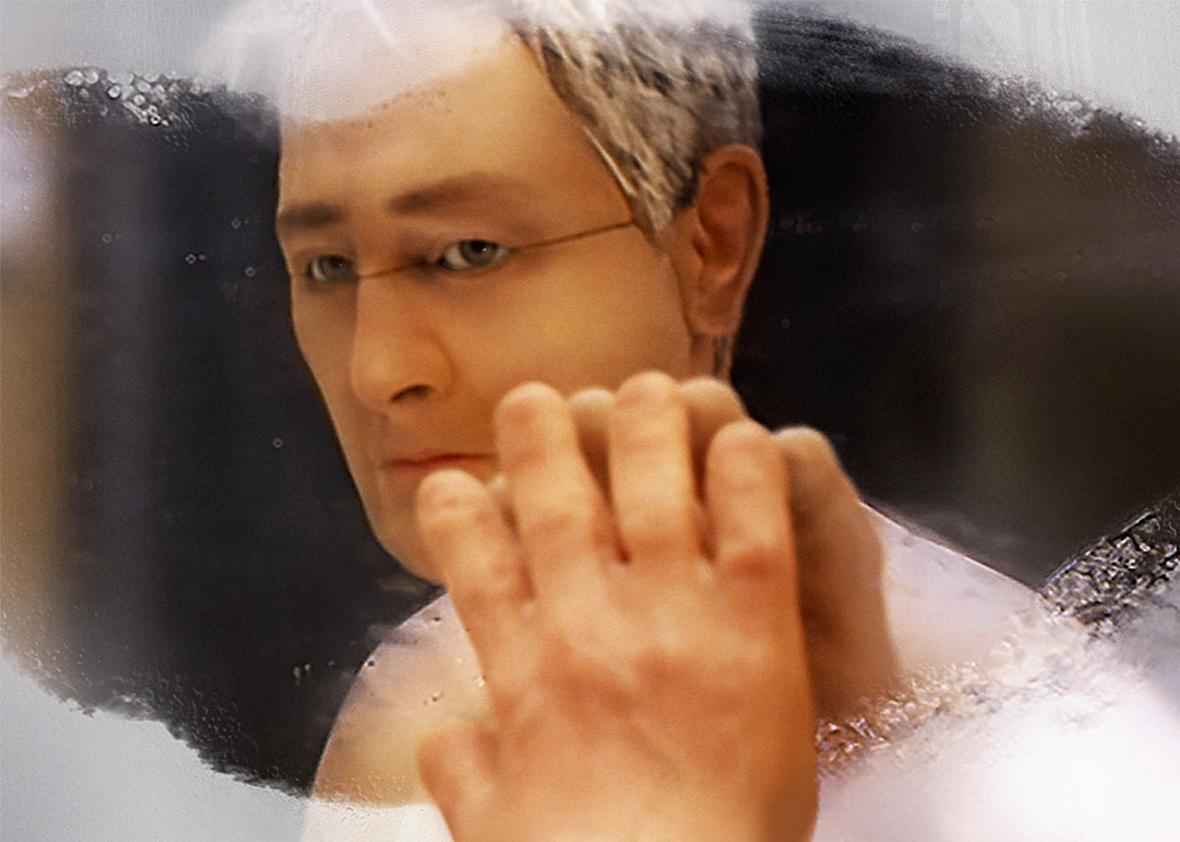Charlie Kaufman and stop-motion animation belong together, as has been clear since long before their meeting in the wondrous new movie Anomalisa, co-directed by Kaufman and animator Duke Johnson. In the past, Kaufman’s scripts—in which psychological states often have unsettlingly literal effects in the physical world—have led Spike Jonze (Adaptation, Being John Malkovich) and Michel Gondry (Eternal Sunshine of the Spotless Mind) to find their inner puppeteers. (Not for nothing was that the profession of John Cusack’s character in Malkovich.) Kaufman’s first film as both writer and director, Synecdoche, New York, ostensibly takes place in a live-action world of flesh-and-blood people. But the philosophical questions Synecdoche raises seem to cry out for animated treatment. In the latter half of that movie, Philip Seymour Hoffman’s theater-director protagonist, having spent years laboring over an impossibly vast project that would somehow represent every aspect of his lived experience as art, eventually casts another man (played by the great actor and director Tom Noonan) as his own double. Soon, that initially benign double starts—as doubles will do—to cast doubt on the Hoffman character’s own identity. From there it’s a simple leap into the world of Anomalisa, a movie made up of plastic simulacra, including, in a sly bit of voice casting, Noonan once again.
Michael Stone (voice of David Thewlis), the depressed writer of a successful customer-service self-help book called How May I Help You Help Them?, is on a plane en route to Cincinnati, where he will check into a posh yet dreary hotel, meet up with an old flame for a drink, take phone calls from his coldly furious wife, and eventually have an unexpected encounter with a woman (voice of Jennifer Jason Leigh) he meets by chance. Beginning with the chorus of mumbled voices that opens the film—layers of overheard in-flight conversations, each more banal than the last, some of them repeating each other phrase for phrase—it becomes clear that we’re hearing what the world must sound like to Michael: dull, empty, a vague scrim of undifferentiated noise. Everyone he meets has the exact same pleasant, impenetrable affect, whether flight attendant, taxi driver, or hotel desk clerk.
Almost exactly halfway into this 90-minute movie, a truly different person suddenly appears: an anomaly. Lisa. Anomalisa. (To really get Charlie Kaufman, you have to be OK with portmanteau-pun titles.) Voiced by Leigh with great humor and fearless vulnerability, she’s a bubbly but insecure Midwestern sales rep treating herself to a weekend away with a female workmate. The women get a little tight on apple mojitos, and Lisa winds up having a nightcap in Michael’s hotel room (beautifully imagined, as is the whole production, in drab, melancholy hues that recall the interiors of the cartoonist Chris Ware).
The encounter between Michael and Lisa—a long, slowly unwinding love scene that’s this sometimes savagely unromantic movie’s beating heart—is so unexpectedly intimate, and ultimately so heart-rending, that I’ll leave off the plot description there and instead try to describe the curious visual and aural experience of seeing Anomalisa. The camera (Joe Passarelli was the cinematographer) takes its time following these stiff, not-quite-natural figures as they move through, say, a bleak, Muzak-filled hotel lobby. But there’s something about the upfront artificiality of these figures—all of which have visible seams across their faces, where the 3-D-printed plates making up their heads come together—that keeps them well clear of that fabled uncanny valley into which computer-animated human beings can still sometimes fall, and soon the movie’s deliberate pace comes to seem like a natural fit for its somber (but never humorless)mood. The movie reveals its surprises with equal deliberation, and part of the pleasure later is in thinking back to recall just when it was you figured out the odd perceptual tricks Kaufman and Johnson are getting up to in the movie’s design and execution. Whatever combination of practical effects and digital wizardry went into the technique that gave rise to Anomalisa’s otherworldly yet very human narrative universe, I hope it will be used to tell more stories, perhaps by this same storyteller.
The word Fregoli recurs in Anomalisa: It’s the name of the hotel where Michael and Lisa have their fraught encounter. Kaufman originally wrote the script under the pseudonym Francis Fregoli, to be performed in a roundtable reading by three actors. (It’s only after 10 years of trying, and a Kickstarter campaign, that Kaufman managed to get the project made in animated form, a treatment he initially resisted.) The reference is to the Fregoli delusion, a mental disorder that makes the sufferer see the rest of the world as populated by multiple versions of a single malevolent individual bent on his or her destruction. That psychological condition is never mentioned by name or otherwise invoked in the film—if what ails Michael needs a medical label, I’d go with plain old unglamorous clinical depression. (At one low point, he does wonder aloud whether his dissociated state might be a side effect of Zoloft.) By placing us inside the jointed plastic head of a man who’s shut out the world for too many years, the ingeniously imagined, flawlessly performed Anomalisa suggests we may all be walking around with some version of the Fregoli delusion, at least until those rare moments when we come across a voice or a face that somehow feels different enough to remind us that another person—maybe someone right there in the room with us—is equally alive.
